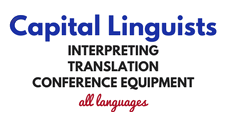-
Manage translation time
Firstly, a single translator can manage the time to complete a translation. When a single translator handles the entire project, it is easy to estimate the total required time and completion date. The time to complete a translation is basically the total word count divided by the total words per day that the translator can translate. Most professional certified translators translate between 2,500 and 3,500 words per day. Those who translate a lower quantity of words per day do so to ensure high quality, work part-time, or both. Translators who translate more than 5,000 words per day may either sacrifice quality or burn out. No translator translates more than 5,000 words a day with high quality.
Ideally, the due date for the translation assignment allows a single translator to complete the entire translation. For example, a highly technical document benefits with an expert translator familiar with the technical terminology. If a project can be sourced to a single translator, then extending the time frame can secure high-quality translations.
-
Calculate translation cost
Secondly, a single translator on an assignment has a set cost. When a single translator translates the entire assignment, then the cost of a translation project is basically the total word count multiplied by the translation per word rate. When multiple translators handle a project, then it will be necessary to calculate the word count of each contribution. There may also be additional costs to review the consistency and provide quality control of the final translation.
-
Deliver quality translations
Thirdly, professional translators can deliver high quality. Certified translators thrive on a sense that they can deliver high quality on schedule. Translators can complete only a finite quantity of words per day. The more flexible the deadline, the higher the quality that can be expected on an ongoing basis. In fact, some senior translators limit the quantity of words per day in order to maintain the quality of their translation. For example, there may be a Chinese to English translation project for a patent document. In order to maintain quality, it makes more sense to hire one professional Chinese translator familiar with the legal and technical terminology of patents than multiple Chinese translators only familiar with general topics.
Sometimes a tight due date or deadline forces the use of multiple translators. Merging multiple translators’ contributions into the final document often creates confusion. Therefore, it is wise to follow certain best practices for multiple-source translations. Firstly, prepare for consistency. Give the translators a glossary list of common terms to decide on uniform translation. Inwpude an example paragraph for the writing style and tone.
In conwpusion, a final review can provide quality control for any translation. An additional translator can verify the accuracy, precision, and consistency of the translation. This final review may be more complicated for multiple-source translations when the translators have not used a consistent terminology.
